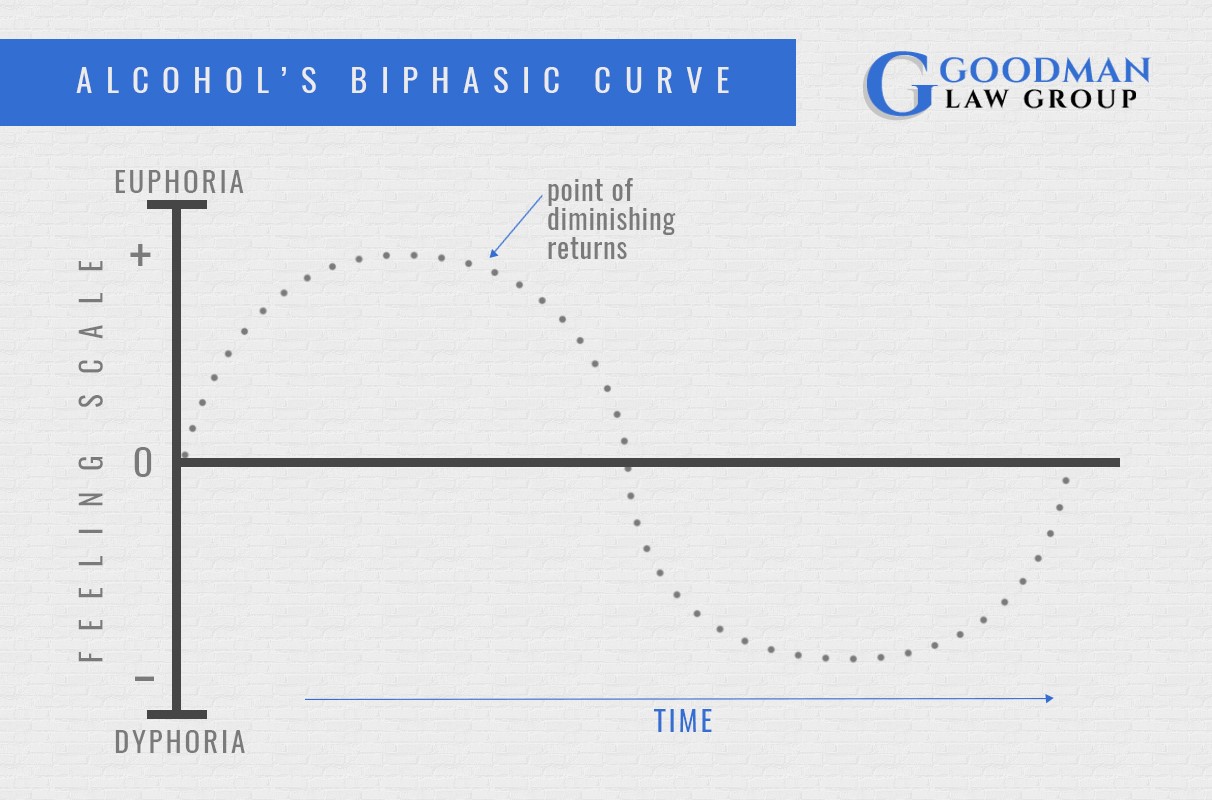It is a popular saying among drinkers that “The more you drink, the happier it gets”. But what people do not know is that, the moment we drink alcohol, the BIPHASIC effect takes place.
What is the Biphasic effect?
The biphasic effect, also known as the biphasic curve, is the “turning point” from good to bad effect of drinking alcohol. It has TWO phases: the positive and the downfall to negative phase. Hence, the term Bi-phasic. Let’s use cooking as an example. We add salt to food to improve their taste. However, too much salt can make your food go from tasty to bad.

Another example of biphasic effect is a rubber. It can be stretched only up to a certain point. If you stretch it too far, it would break.
Alcohol and Biphasic Curve
Alcohol Biphasic Curve is all about the drop from the feeling of Euphoria to Dysphoria. According to an article published by Dr. David J. Hanson, a person starts to feel better the moment they start drinking (1st phase). The feeling of Euphoria would intensify up to BAC level of 0.55. At BAC level of 0.56 (2nd phase), the person would start feeling the symptoms of Dysphoria.

The Point of Diminishing Returns
The peak of the graph is called the point of diminishing returns. This point is where another shot of alcohol would no longer induce Euphoria. However, the point of diminishing return differs from one person to another. This was proven by a group of researchers at the University of Chicago.
The study was conducted by Andrew C. King, Tim Houle, Harriet de Wit, Louis Holdstock and Alyson Schuster. They hypothesized that the Biphasic effect of alcohol varies between Hard drinkers and Light drinkers. The subjects of the study were a group of 34 middle aged males and females. They were carefully screened and grouped – the light and heavy drinkers. The LD group consists of people who drink less than 5 drinks per week. The HD group consists of people who drink a minimum of 10 drinks per week. See the table below for more details. (Image credits go to the researchers)

Each group received the same drinks, took the drink at the same time, ate the same meal and were placed in a controlled environment.
The result of the experiment is shown below.

There are three symbols in the graph. The “Square” means high alcohol dosage; Triangle means low dosage; and the circle is a placebo. Based on their findings, the LD reach the point of diminishing returns at around 0.35 BAC for low dosage, and at around 0.70BAC level for high dosage. The HD group reached the point of diminishing returns at 0.40BAC for low dosage, and at 0.80BAC for high dosage.
Conclusion
Most of the states use the 0.08% BAC limit for DUI. The studies say that the peak of Euphoria hovers between 0.35% and 0.8%. Therefore, it is possible to achieve the state Euphoria and still be below the BAC limit. Additionally, a person should limit the consumption of alcohol in order to maximize its effect (Euphoria). Drinking too much alcohol is always never a good idea as it can result to DUI charges.
Next part of the blog would be about Euphoria and Dysphoria.
Related Aricles: Standard Drink – Can it be used in DUI?
